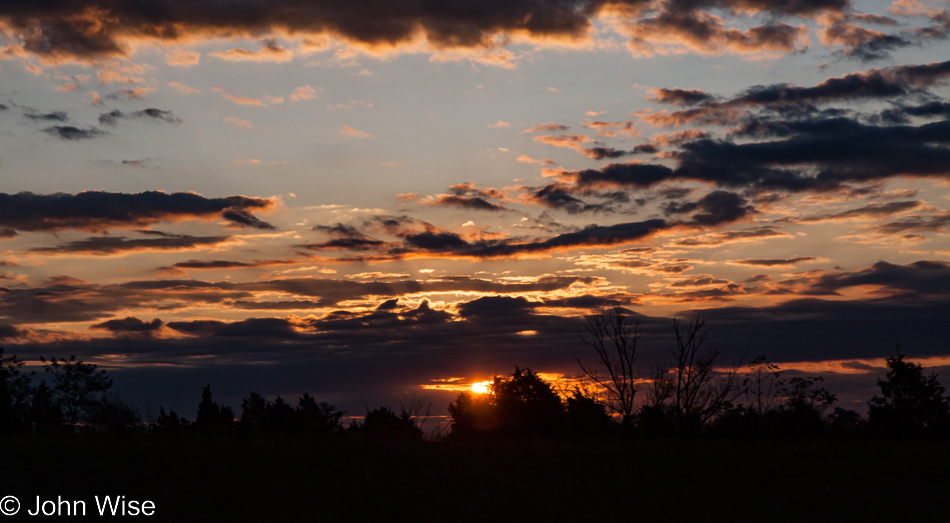
Today was the last day of our short vacation that began in Baltimore and will end there, too, but until then, we have something to do that starts right here in Pennsylvania, where we spent the night.
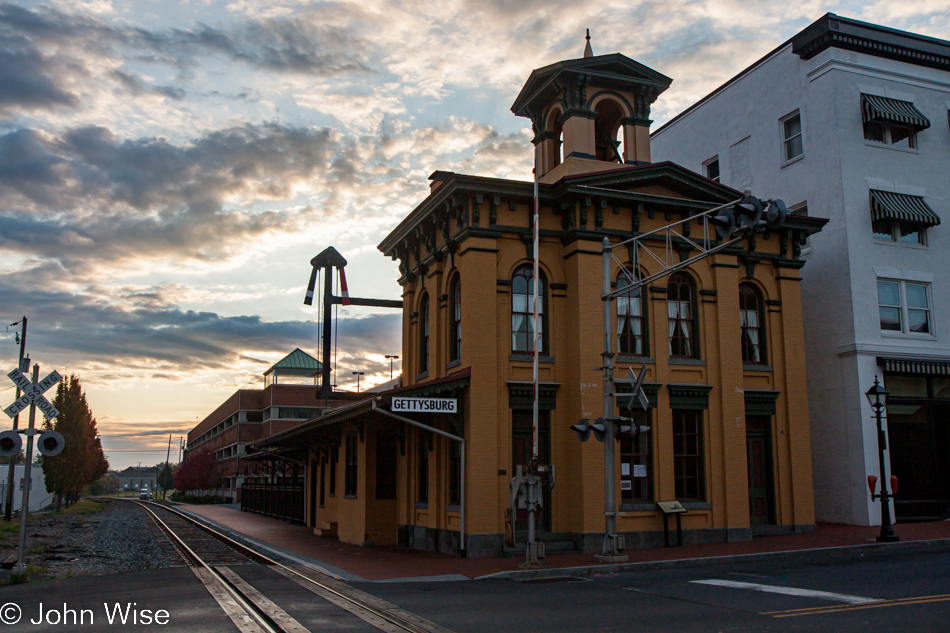
This little old train station should offer you all the clues you need to figure out where we are. While you might surmise where we are, the people at Segs in the City bungled our scheduled Segway tour and never showed up; no big deal, as we are pretty good at entertaining ourselves.
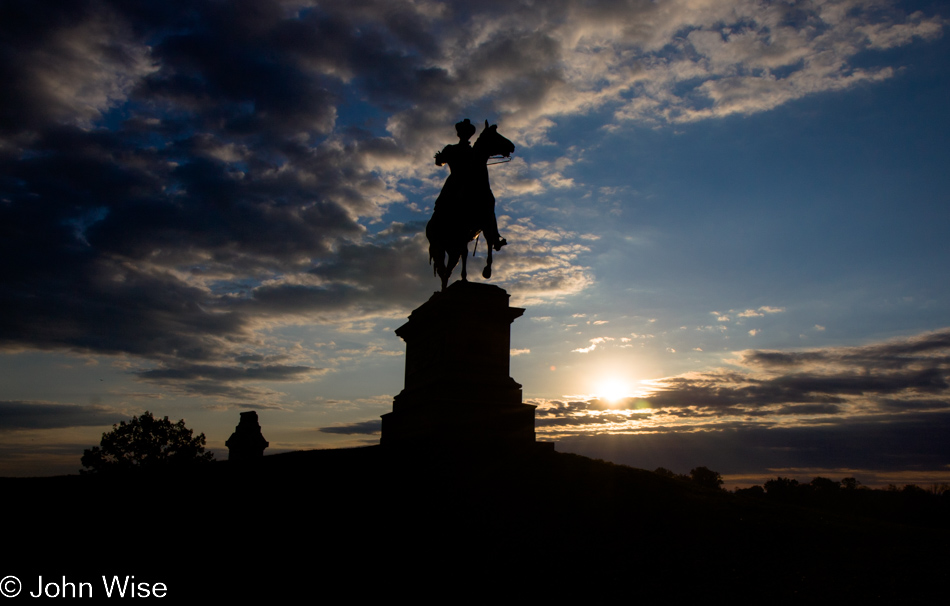
Shortly after the break of dawn seemed like a great time to arrive at Gettysburg National Military Park.
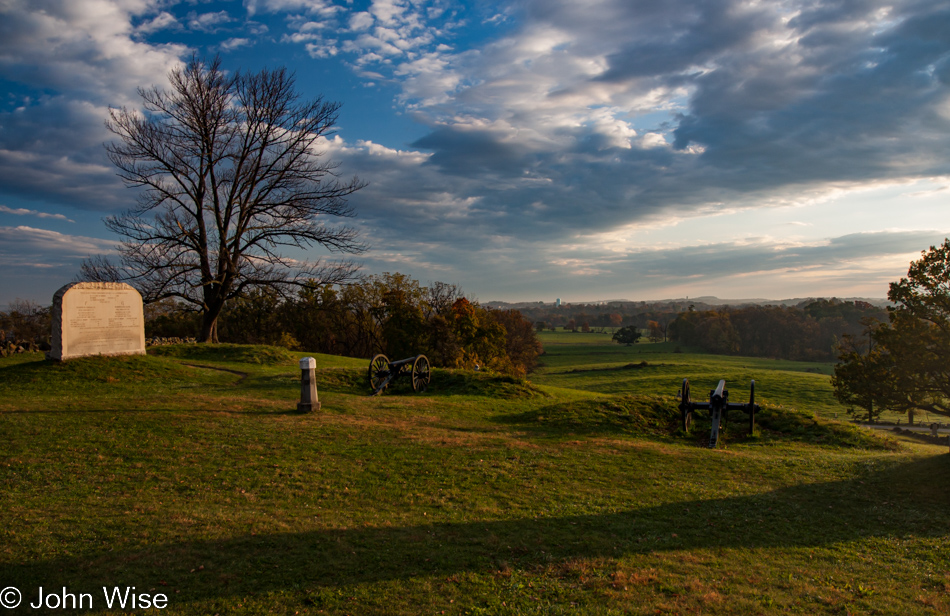
It’s late in the year, early autumn, and with the summer vacation season closed, we seemed to have picked a particularly solemn time to pay a visit to these hallowed grounds
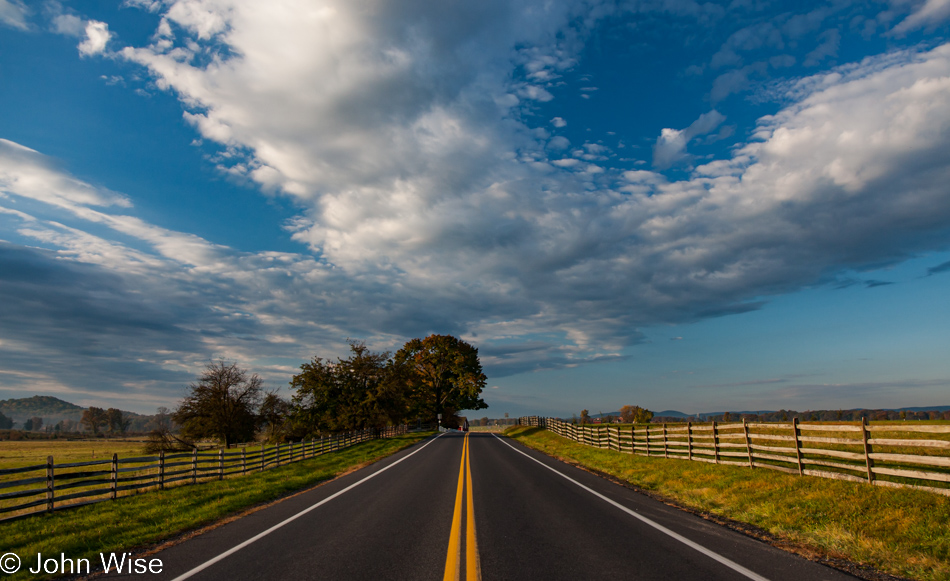
While it often happens that we are so early that we’ve beat everyone else it’ll be much like this the majority of the day, just Caroline and I.
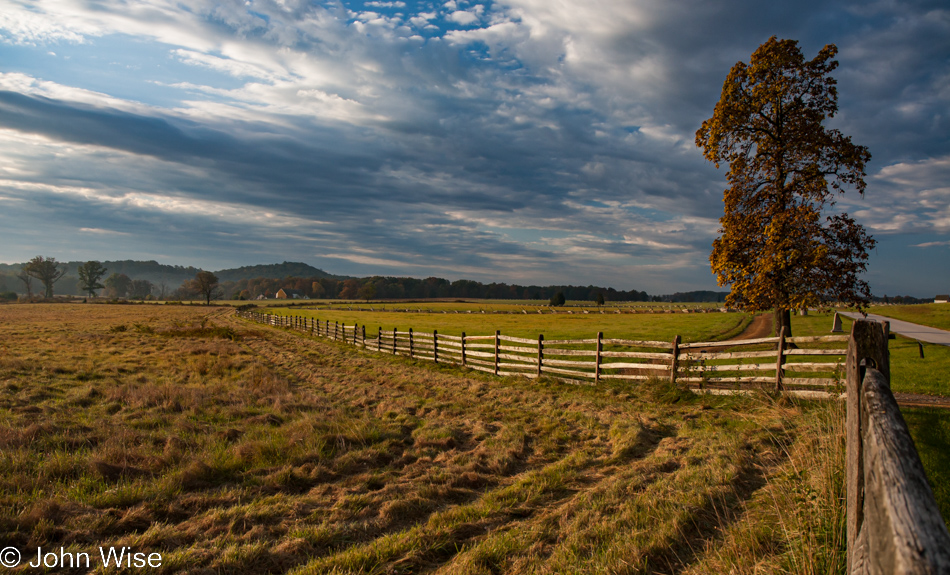
Like the Blue Ridge Parkway about 160 miles south of here or the Natchez Trace Parkway, further southeast, this vast tract of land has been preserved to appear much the way it did back in 1863 in the days prior to the battle that would be the turning point in the Civil War.
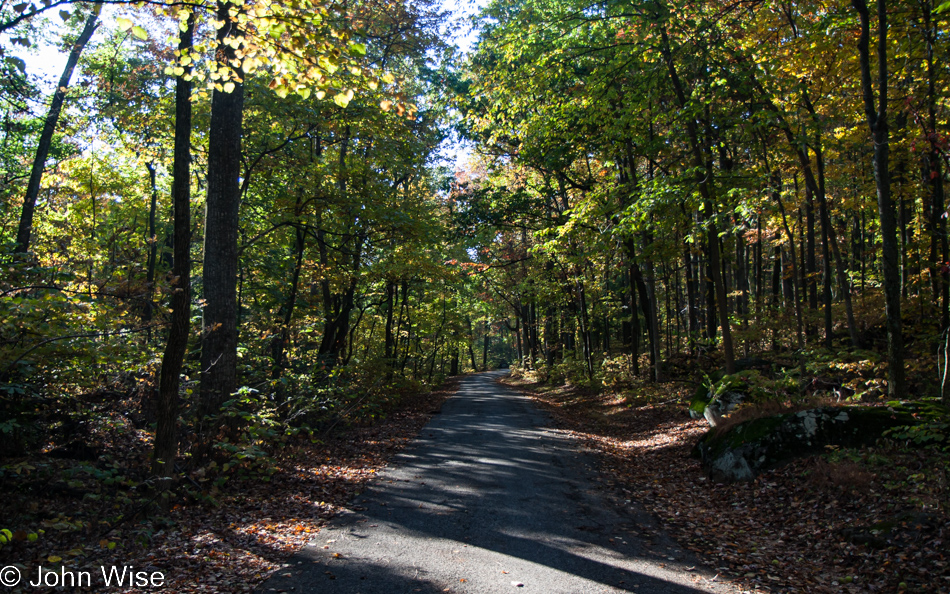
The map for the self-guided tour does a great job of taking us into the small corners of the park.
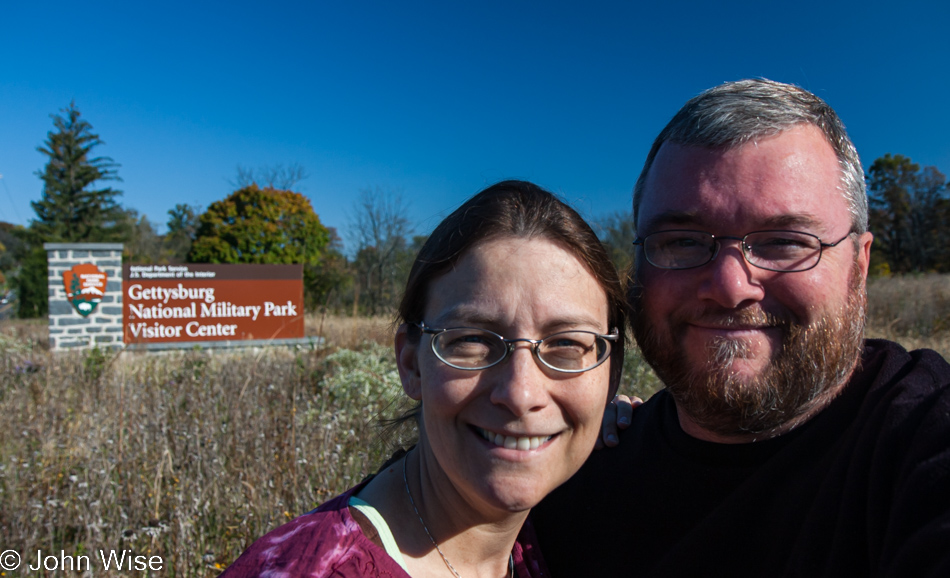
Spotting the National Park welcome sign, we had to note the moment here with a selfie.
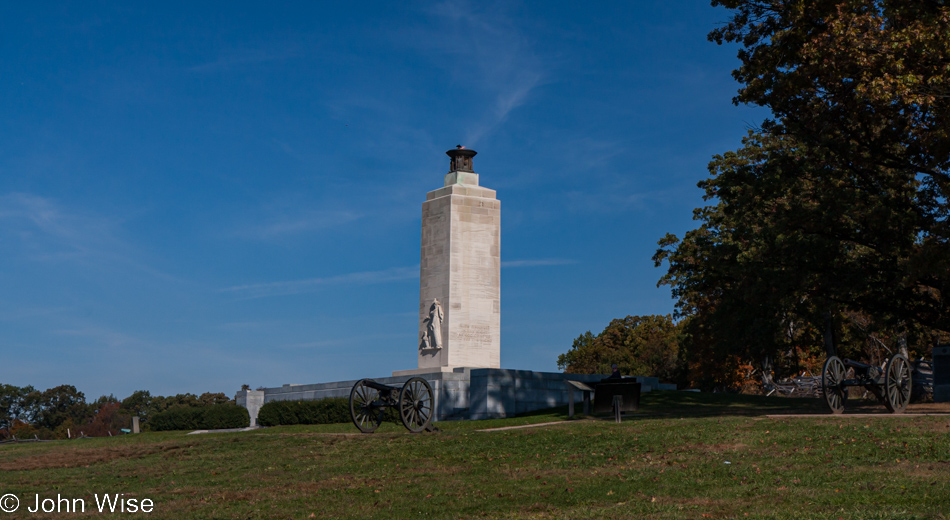
The monuments are adding up with various regiments receiving recognition while also sharing where the unit had originated from, such as New York, Maryland, Pennsylvania, Ohio, etc.
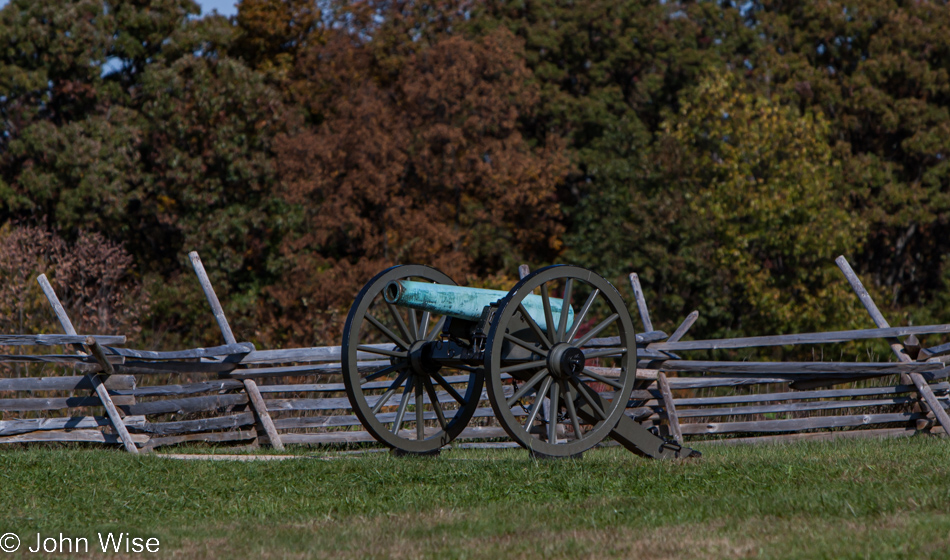
This site was a bloodbath of people killing others, one side fighting to defeat slavery and preserve a union and the other wanting to defend the barbaric practice and remove themselves from the rest of the country that wanted to end slavery.
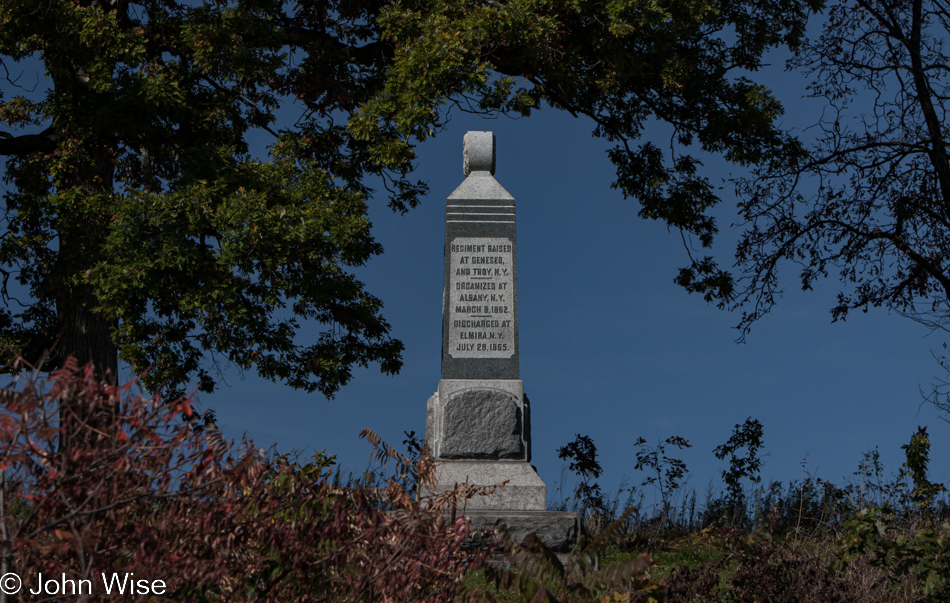
Back on those summer days of June, 7.863 people died, and 51,000 were wounded.
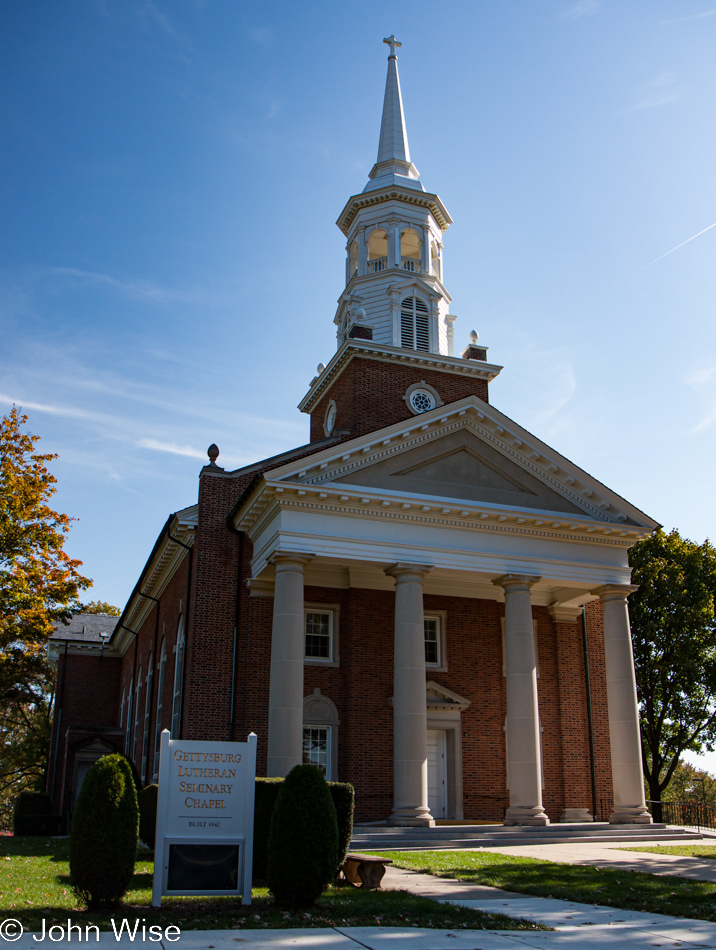
Not exactly a historic building (dating from the 1940s) but it certainly lends itself well to being in the right environment for those who might want to offer prayers.
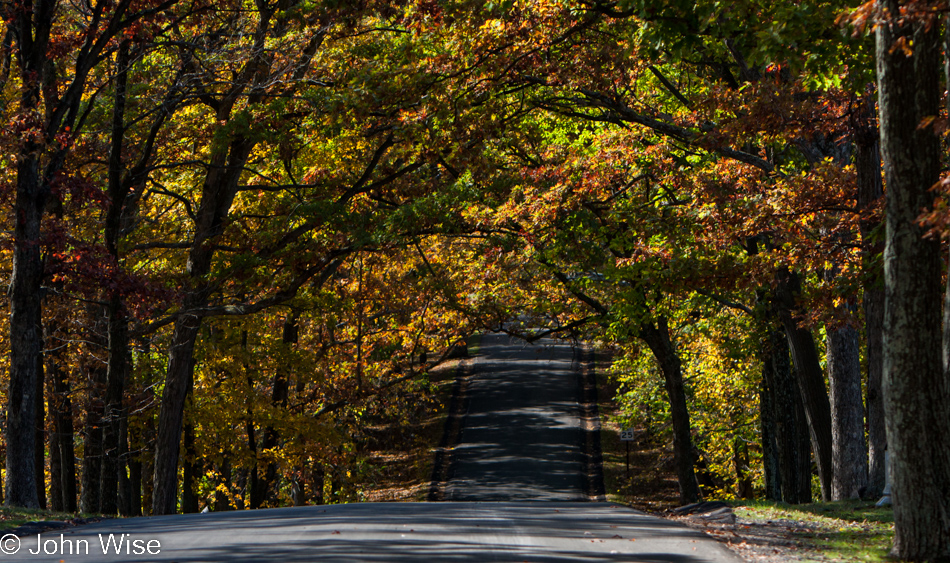
Can anyone moving through such an idyllic landscape begin to imagine what those three pivotal weeks out here would have been like with gunfire ringing out, canons firing, dead men scattered about, the wounded lying in agony waiting to be tended to, and the rage of men driving the whole thing into such barbarism?
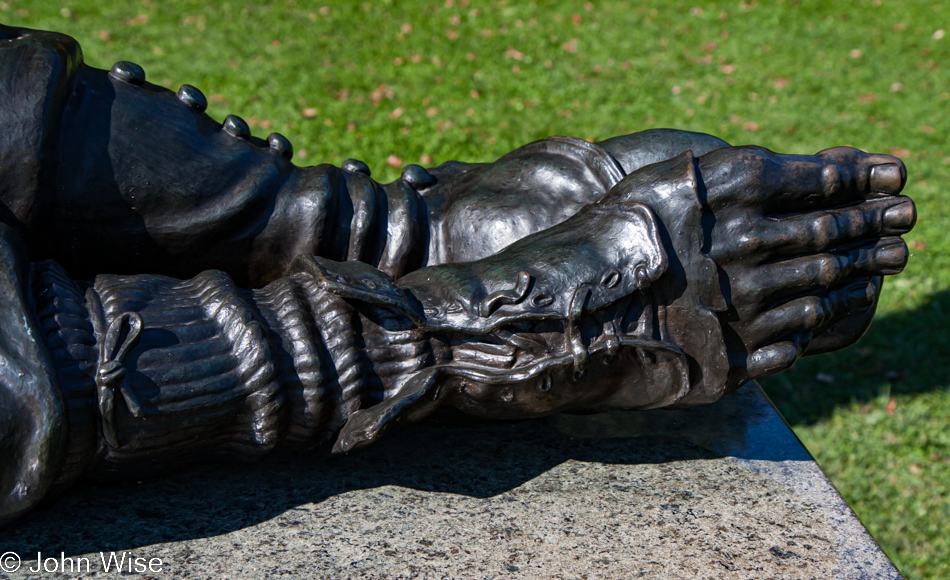
Closeup detail of the Spirit Triumphant, a statue noting the losses of Louisiana at Gettysburg.
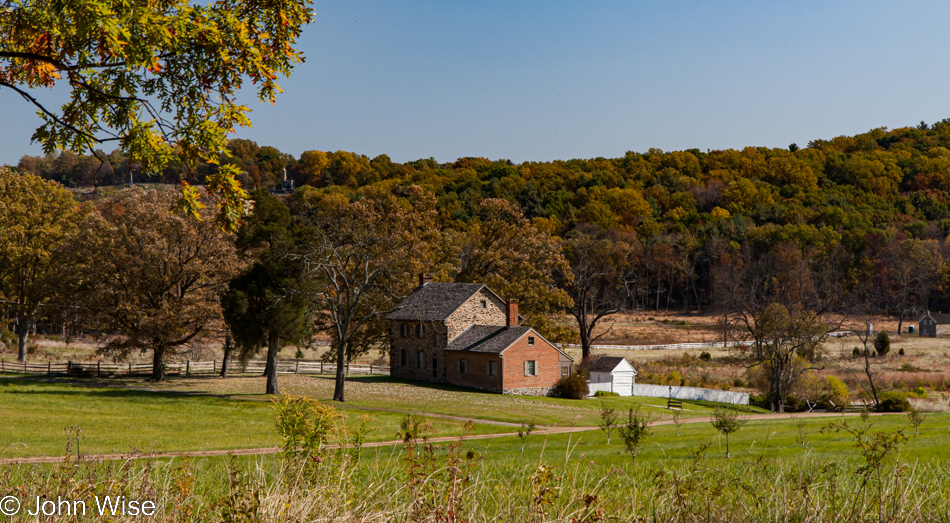
That’s the George and Dorothy Rose Farmhouse out there; sadly, it’s only available for tours during special events; our visit is not one of those days. The house was built back in 1811, and its barn burned down in 1910; today, it belongs to the National Park Service. Part of the property was known as the Wheatfield, where more than 20,000 soldiers clashed, wounding or killing 6,000 men. Not only did Confederate soldiers use this farm for shelter some of the buildings also served as a field hospital. It’s estimated that there are between 500 and 1000 men buried right here.
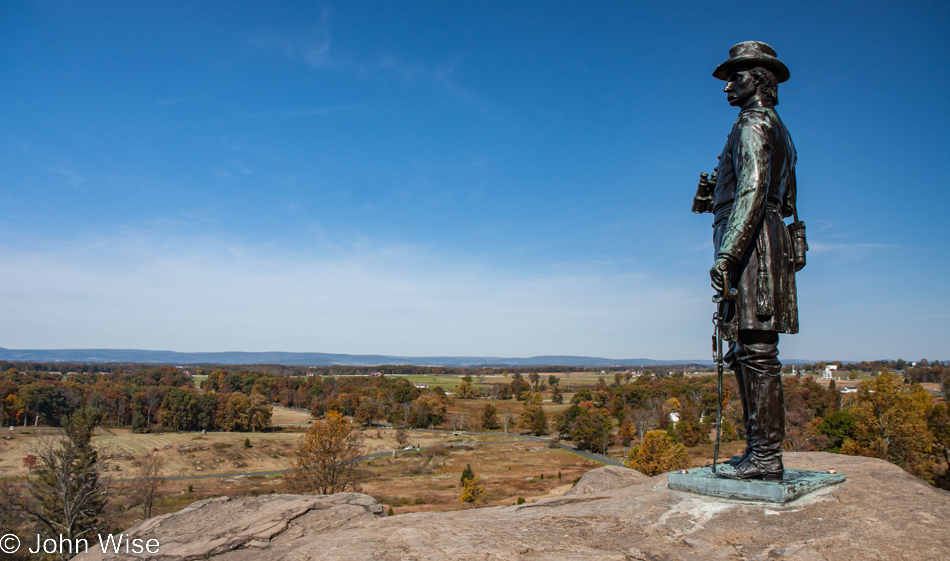
This statue depicts New York General Gouverneur K. Warren on this hilltop since August 8, 1888. From this vantage point, you might want to consider that there were approximately 160,000 men out there intent on killing one another. The Great Lawn in Central Park holds approximately 185,000 people who’ve listened in on Jimi Hendrix, Elton John, and Simon & Garfunkel, while Glastonbury draws about 200,000 people a year if you want to Google an image of what so many people look like and then, imagine then armed and fighting hand to hand.
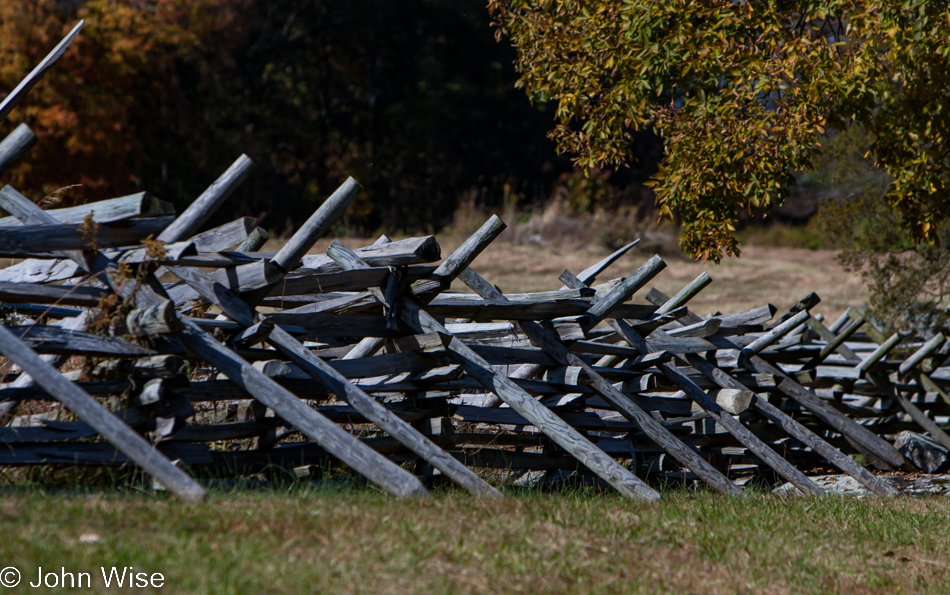
And then, over the three days of the battle, there were no Porta-Johns, no food trucks, no souvenir vendors, and certainly no bands filling the air with music unless you count military drums. Nope, just the sound of the wounded begging for help and those at death’s doorstep praying for mercy.
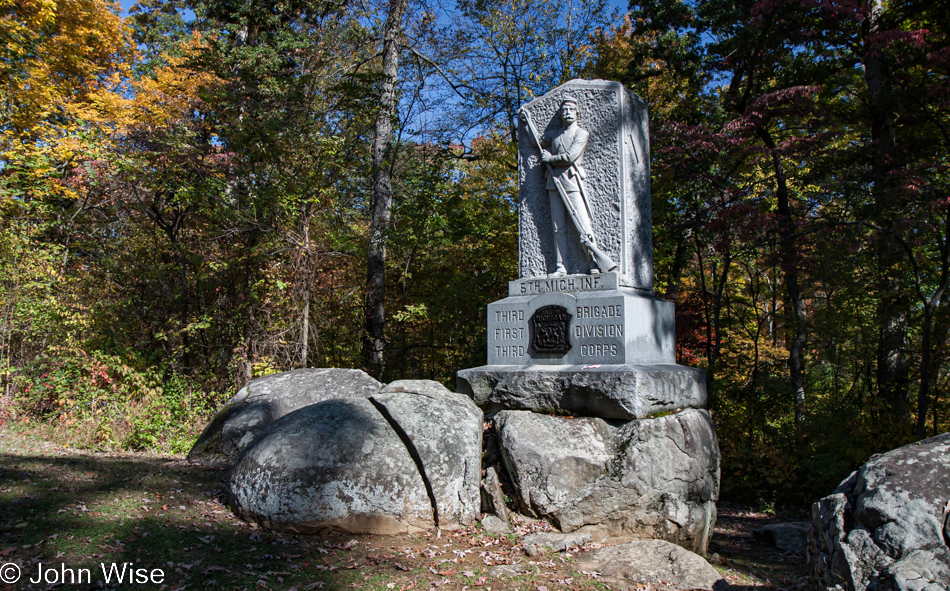
This carnage was considered honorable and necessary by the 11 rogue states of Texas, Arkansas, Louisiana, Tennessee, Mississippi, Alabama, Georgia, Florida, South Carolina, North Carolina, and Virginia because they were pissed about not being allowed to have slaves as members of the United States of America.
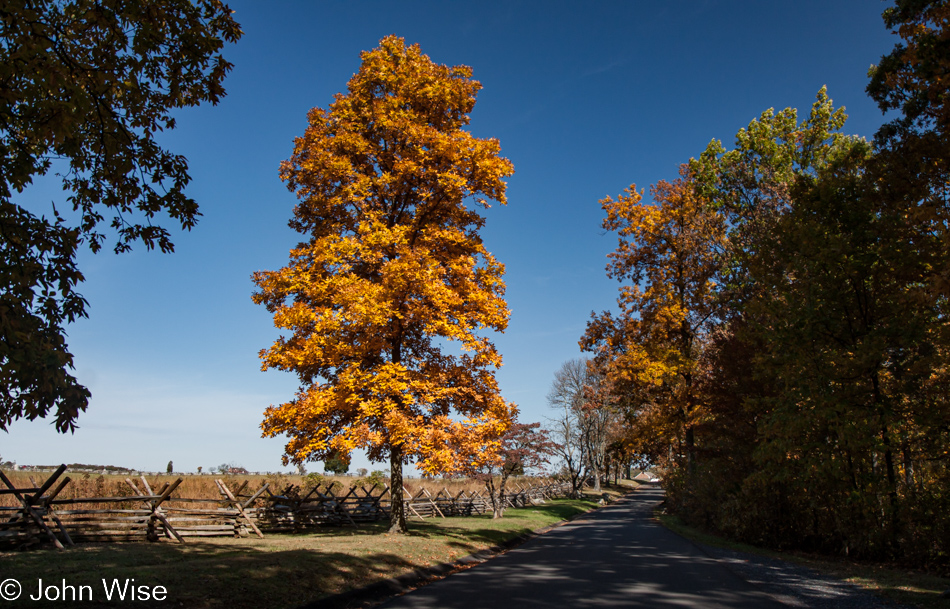
Strange thought that maybe at least some of the trees growing on this old battlefield drew upon the blood and sweat of those who fell on this ground.
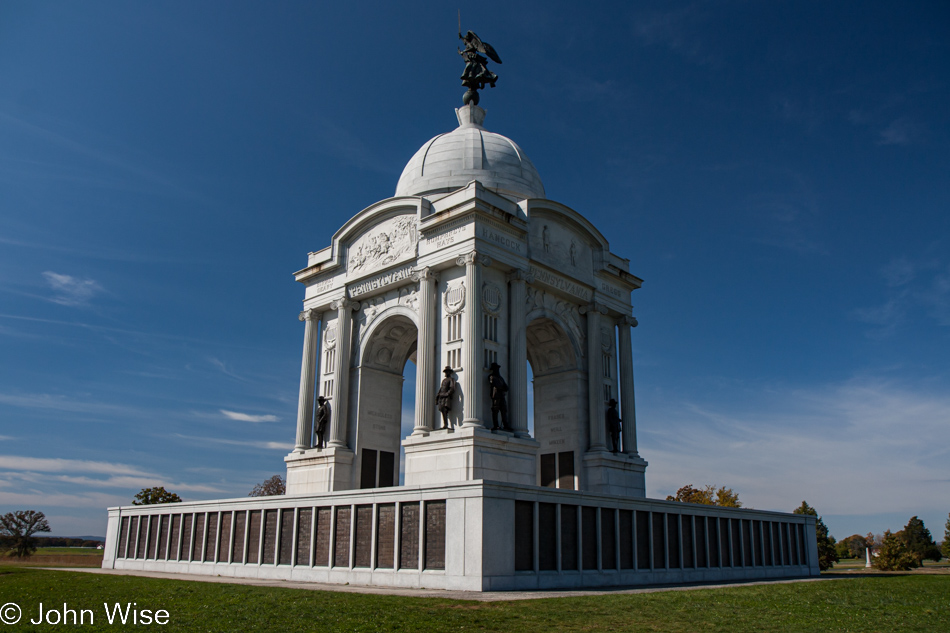
One can only wonder what the monuments will look like in the future after we do this Civil War thing all over again.

Or maybe there will be no monuments as the self-loathing of a people frustrated with their own personal failures that they blame on others will have them existing in hovels like the grubby little animals they aspire to be.
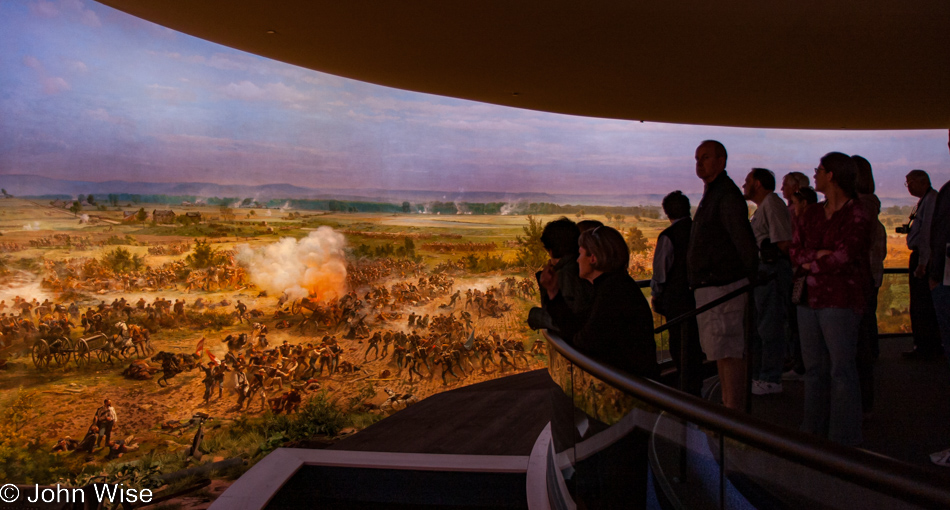
The museum features the Gettysburg Cyclorama, a painting in the round by the French artist Paul Philippoteaux depicting Pickett’s Charge. The narrative, along with spotlights on points of action offers a great view of the battlefield for visitors to this national historic site.
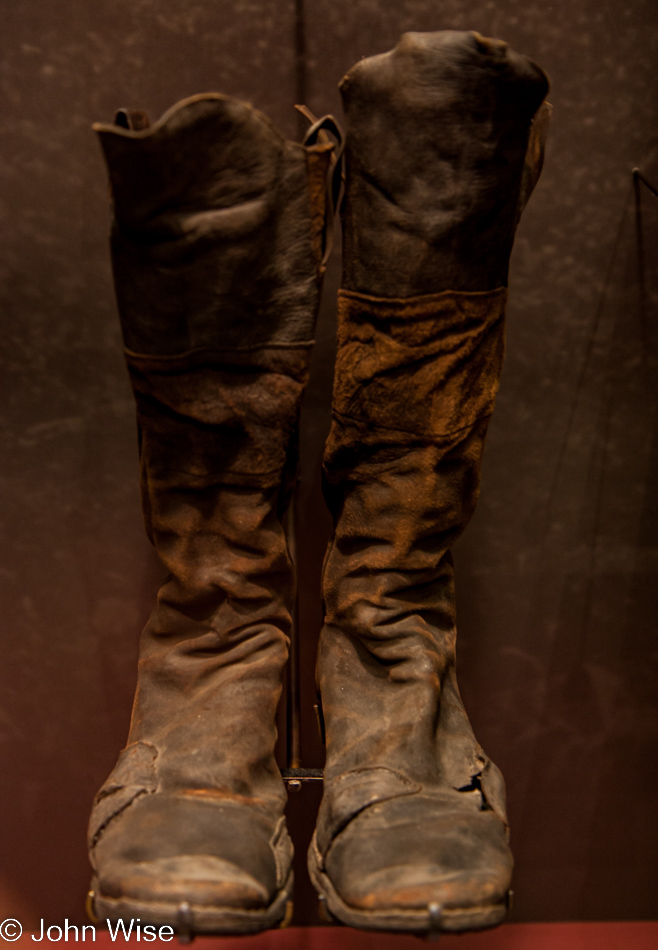
I don’t believe these are the boots any of us would have liked walking in.
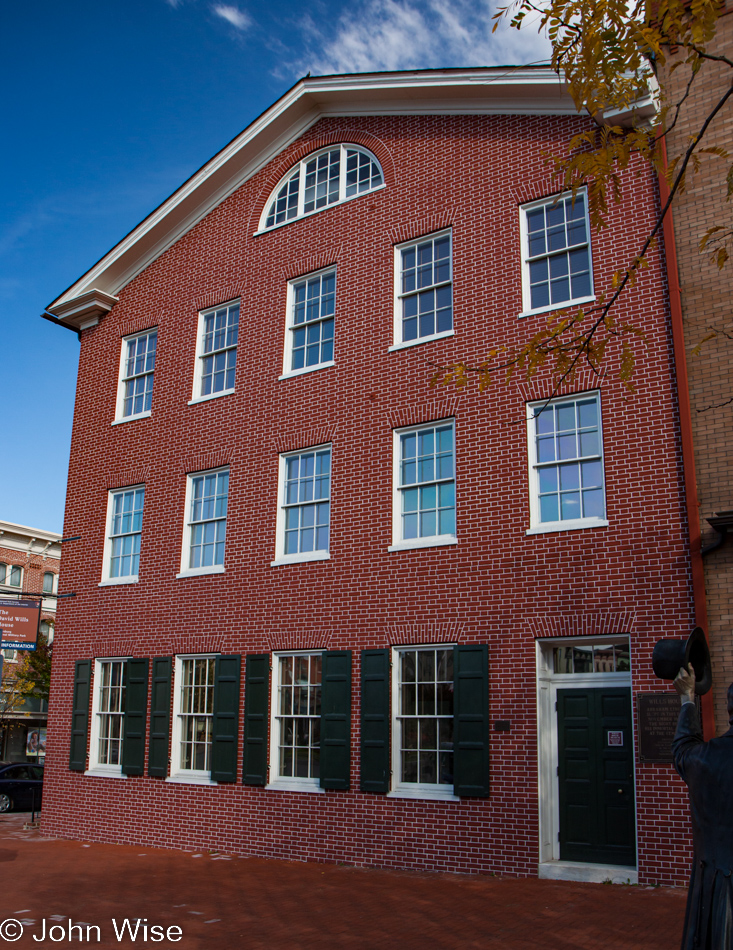
As the hour of our departure quickly encroached, we darted over to the house where Abraham Lincoln allegedly penned the Gettysburg Address on the back of an envelope. This has since been proven wrong, as there are drafts of the speech Lincoln was working on from as early as July 1863.
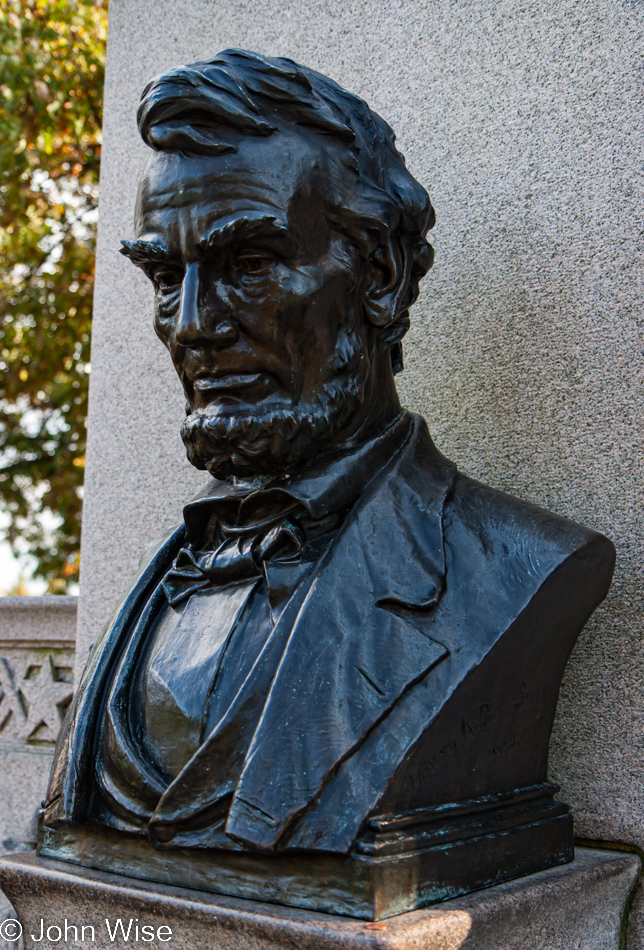
On November 19, 1863, Abraham Lincoln came to Gettysburg, Pennsylvania, for the dedication ceremony of the Soldiers’ National Cemetery, where he gave one of the greatest speeches in American history.
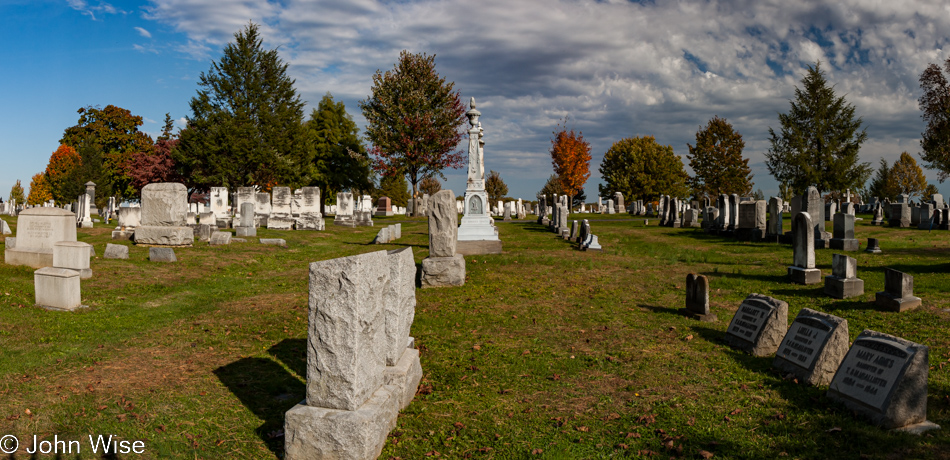
Four score and seven years ago, our fathers brought forth on this continent a new nation, conceived in Liberty, and dedicated to the proposition that all men are created equal.
Now we are engaged in a great civil war, testing whether that nation or any nation so conceived and so dedicated, can long endure. We are met on a great battlefield of that war. We have come to dedicate a portion of that field, as a final resting place for those who here gave their lives that that nation might live. It is altogether fitting and proper that we should do this.
But, in a larger sense, we can not dedicate—we can not consecrate—we can not hallow—this ground. The brave men, living and dead, who struggled here, have consecrated it, far above our poor power to add or detract. The world will little note, nor long remember what we say here, but it can never forget what they did here. It is for us the living, rather, to be dedicated here to the unfinished work which they who fought here have thus far so nobly advanced. It is rather for us to be here dedicated to the great task remaining before us—that from these honored dead we take increased devotion to that cause for which they gave the last full measure of devotion—that we here highly resolve that these dead shall not have died in vain—that this nation, under God, shall have a new birth of freedom—and that government of the people, by the people, for the people, shall not perish from the earth.
—Abraham Lincoln
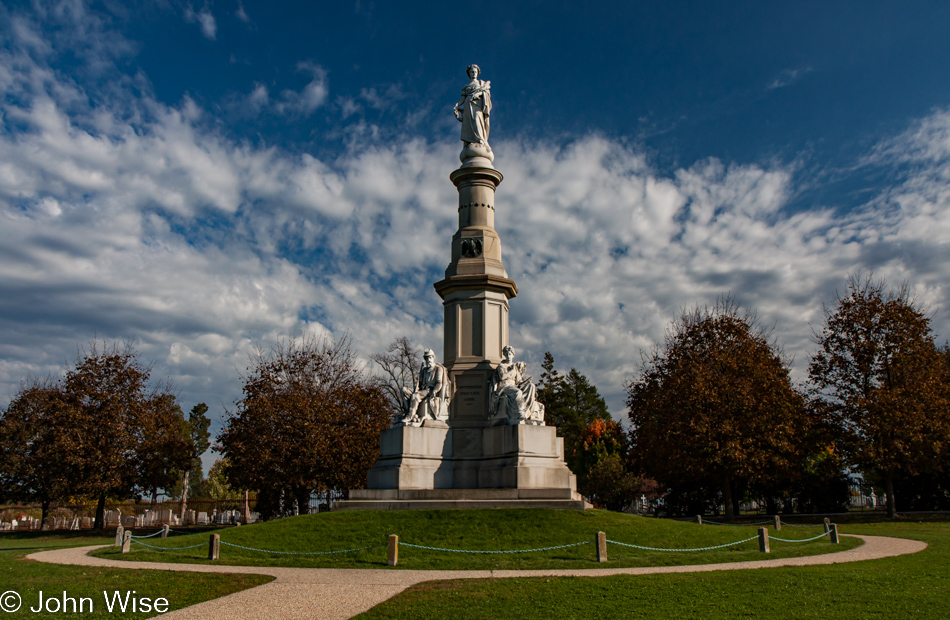
There’s a certain tragedy about visiting Gettysburg that I think arrives with our ignorance of history, politics, ethics, and our own education. Do we really comprehend how fragile the tenuous bonds are that hold us together? The civility of a people is degraded when empathy, education, and community are sacrificed for economic prosperity and give rise to incivility and outright hostility, possibly leading to something as contemptible as a civil war. Monuments may offer us a space to find reflection on distant moments out of a past we believe we no longer really relate to, but they should act as warnings and stop signs that force us to ask ourselves, are we traveling on our own path to war as we forget about the common good in order to only care about ourselves?
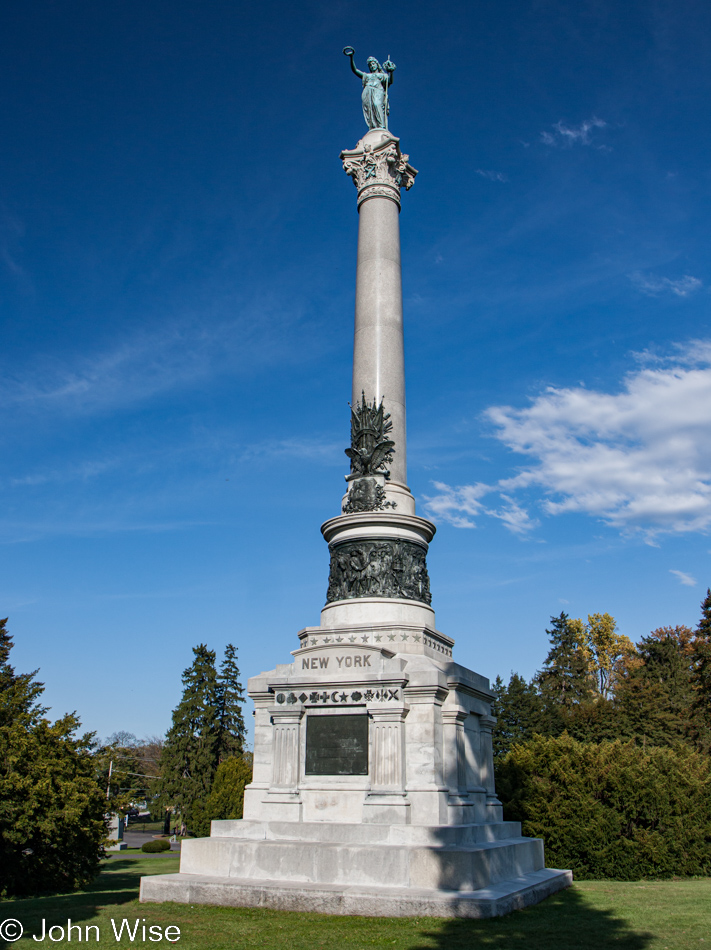
The casualties at Gettysburg for soldiers from New York state alone were 82 officers and 912 enlisted men killed, with 306 officers and 3763 enlisted men wounded.
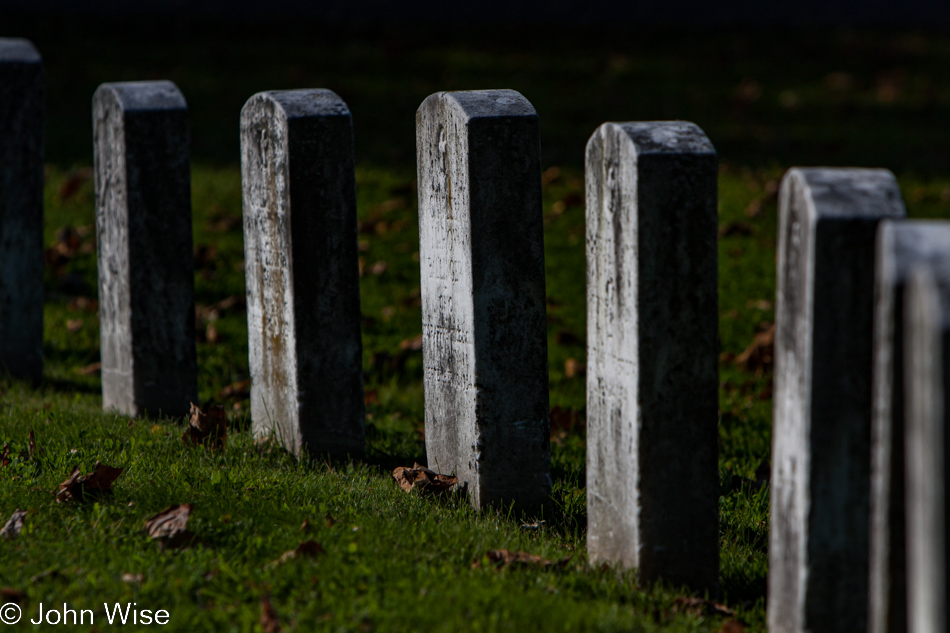
One-hundred forty-six years after these men fell, we no longer have any idea who any of them were. While some fought for holding a country together, others fought for the folly of idiots who only knew their own greed and ignorance unable to perceive any greater good.
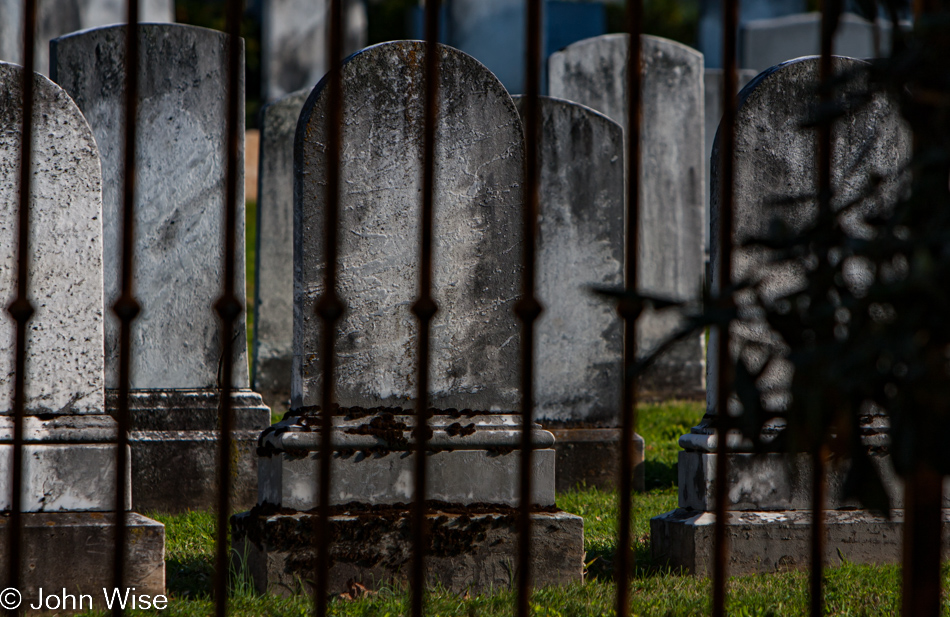
I initially thought we might spend a couple of hours here, but after eight hours and a rushed tour of the museum, we were hardly ready to leave.
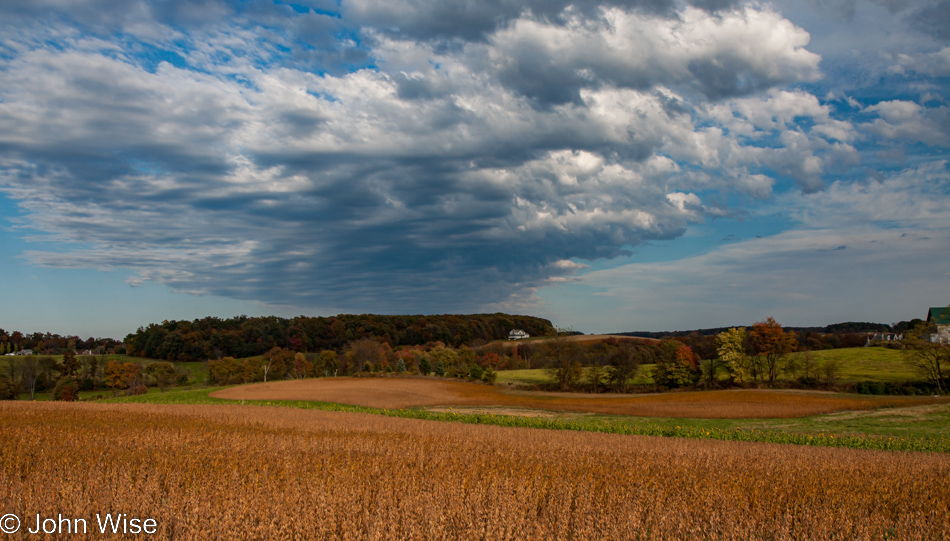
Our self-guided driving tour took us past hundreds of monuments over hill and dale under blue skies from sunrise to late afternoon before we took to the skies for the nearly five-hour flight back to Phoenix, Arizona.